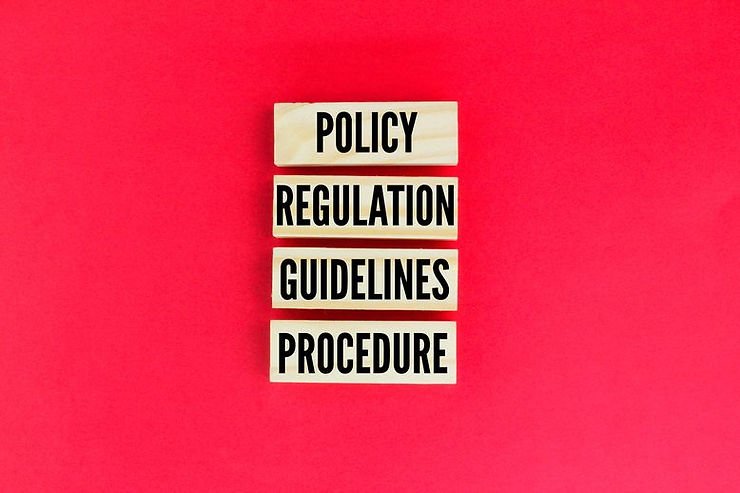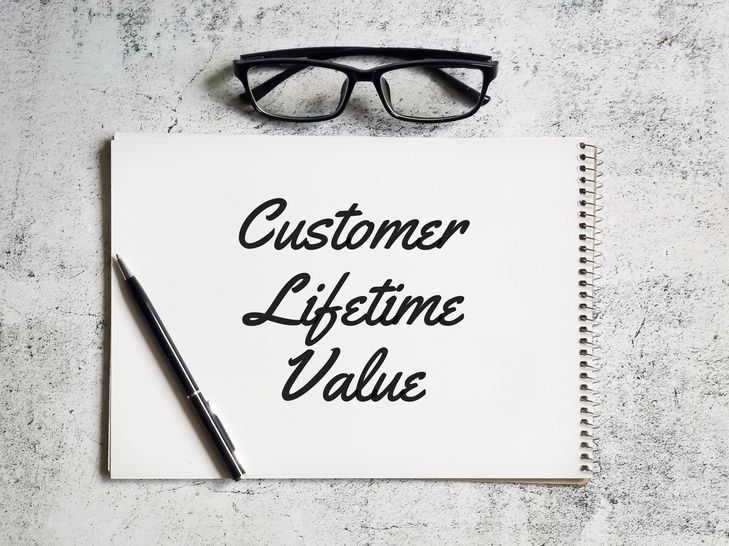In today’s highly competitive e-commerce landscape, maximizing customer lifetime value (CLV) is more important than ever. By focusing on building long-term relationships with customers and providing exceptional value, e-commerce businesses can not only increase their revenue but also create a sustainable competitive advantage. Implementing effective customer retention strategies is crucial to achieving these goals and ensuring your business’s continued growth and success.
Maximizing customer lifetime value (CLV) is essential for growing your e-commerce business, as it helps you focus on long-term relationships with customers and derive more value from them. Retention strategies play a crucial role in achieving this goal. Here are some effective strategies to increase customer retention and maximize CLV in your e-commerce business:
10 Tips For Maximizing Customer Lifetime Value
- Personalization: Tailor your marketing and communication efforts to each customer’s preferences, purchase history, and browsing behavior. Use customer data to create personalized product recommendations, promotional offers, and targeted email campaigns.
- Exceptional customer service: Provide fast, reliable, and friendly customer support to address queries, complaints, and concerns. Offer multiple channels for communication, such as live chat, email, and social media, and ensure your support team is well-trained and empowered to resolve issues.
- Loyalty programs: Implement a customer loyalty program to reward repeat customers with exclusive discounts, free shipping, or other perks. This encourages customers to make more purchases and increases their lifetime value.
- Product quality: Consistently offer high-quality products that meet or exceed customer expectations. Regularly review customer feedback and address any concerns to maintain and improve product quality.
- User experience: Optimize your e-commerce website or app for user experience by ensuring it is easy to navigate, mobile-friendly, and has a streamlined checkout process. This will reduce cart abandonment rates and encourage customers to return for future purchases.
- Engage customers through content: Provide valuable and engaging content through blog posts, videos, social media, and email newsletters. This helps to build relationships with customers, position your brand as an industry leader, and encourage repeat purchases.
- Re-engagement campaigns: Use email and retargeting campaigns to re-engage inactive customers. Remind them of abandoned carts, offer personalized discounts, or showcase new products to encourage them to return.
- Transparent policies: Communicate your return, shipping, and privacy policies to build trust with customers. Make sure these policies are fair and customer-friendly to minimize disputes and maintain positive relationships.
- Customer feedback: Actively seek customer feedback through reviews, surveys, and social media. Respond to both positive and negative feedback, and use it to improve your products and services.
- Analyze and optimize: Regularly monitor your customer retention metrics and analyze the data to identify trends and areas for improvement. Use this information to optimize your retention strategies and maximize customer lifetime value.
By implementing these retention strategies, you can grow your e-commerce business and foster long-term relationships with your customers. This not only increases customer loyalty and repeat purchases but also helps you create a strong, sustainable brand in the competitive e-commerce landscape.
Personalization

Personalization is a powerful marketing and communication approach that involves customizing your interactions with customers based on their individual preferences, purchase history, and browsing behavior. By leveraging customer data, you can create a more engaging and relevant shopping experience, which increases customer satisfaction, loyalty, and lifetime value. Here’s an in-depth explanation of how to implement personalization in your e-commerce business:
Collect Customer Data
The first step is to gather data on your customers’ preferences, purchasing behavior, and browsing history. You can use web analytics tools, CRM systems, and customer feedback to collect this information. Ensure you comply with data privacy regulations and obtain the necessary consent from customers before collecting and processing their data.
Analyze And Segment Customers
Analyze the collected data to identify patterns, trends, and customer segments. Group your customers based on factors like demographics, buying patterns, product preferences, and browsing behavior. This will help you create tailored marketing strategies for each segment.
Personalized Product Recommendations
Use customer data and machine learning algorithms to generate personalized product recommendations for each customer. Display these recommendations on your website, in emails, or through advertising campaigns to increase the chances of customers finding products they love.
Customized Promotional Offers
Create tailored promotional offers based on each customer’s preferences and purchase history. For example, offer personalized discounts on frequently purchased items or products that complement their previous purchases.
Targeted Email Campaigns
Use email marketing automation tools to send targeted and personalized email campaigns. Segment your email list based on customer data and create tailored content for each segment. Include personalized product recommendations, offers, and other relevant information that speaks directly to the individual recipient.
Personalized Website Experience
Customize the user experience on your website based on each visitor’s browsing history and preferences. For instance, display personalized product recommendations, offer relevant upsells and cross-sells, or highlight items from their wish list.
Dynamic Retargeting
Use dynamic retargeting ads to show personalized product recommendations to customers who have previously visited your website. These ads can be based on products they viewed, added to their cart, or purchased in the past, which increases the likelihood of re-engaging them and driving conversions.
Test And Optimize
Continuously test and optimize your personalization efforts to ensure they’re resonating with your customers. Use A/B testing to compare different personalization approaches and analyze their impact on key metrics like engagement, conversion rates, and customer satisfaction.
By implementing these personalization tactics, you can create a more engaging and relevant shopping experience for your customers. This not only helps in building stronger relationships but also increases customer satisfaction, loyalty, and ultimately, their lifetime value to your e-commerce business.
Exceptional Customer Service

Exceptional customer service is critical for retaining customers and enhancing their lifetime value in your e-commerce business. By providing fast, reliable, and friendly support, you can address customer queries, complaints, and concerns effectively, leading to increased satisfaction and loyalty. Here are some tips for delivering exceptional customer service:
Multiple Communication Channels
Offer various channels for customers to contact your support teams, such as live chat, email, social media, and phone. This allows customers to choose the method they are most comfortable with, increasing the likelihood of a positive experience.
Quick Response Times
Customers expect prompt responses to their inquiries. Set up your customer support system to provide fast and efficient responses, whether it’s through automated replies or human support. Monitor response times and set targets to ensure your team maintains a high level of responsiveness.
Knowledgeable Support Team
Invest in training your customer support team to ensure they have in-depth knowledge about your products, services, and policies. This enables them to provide accurate information and resolve customer issues quickly and effectively.
Empower Your Team
Give your customer support team the authority and resources they need to resolve customer issues independently. This helps reduce the time spent on escalations and creates a more seamless support experience for your customers.
Personalize Interactions
Encourage your support team to personalize their interactions with customers by addressing them by name and referencing past interactions or purchases. This demonstrates that you value their business and are committed to understanding their needs.
Proactive Support
Anticipate common customer issues and provide proactive support through FAQs, knowledge base articles, video tutorials, or chatbots. This enables customers to find answers to their questions quickly, reducing the need for direct support.
Follow-Up And Feedback
After resolving a customer’s issue, follow up to ensure their concerns have been fully addressed. Ask for feedback on their support experience to identify areas for improvement and demonstrate your commitment to continuous improvement.
Monitor And Analyze Support Metrics
Regularly track key customer support metrics, such as first response time, resolution time, customer satisfaction ratings, and support ticket volume. Analyze these metrics to identify trends, bottlenecks, and areas for improvement.
Maintain A Positive Attitude
Encourage your customer support team to maintain a friendly and positive attitude during interactions with customers. This helps create a pleasant support experience, even when dealing with difficult situations.
By implementing these strategies, you can provide exceptional customer service that not only resolves issues efficiently but also fosters long-term relationships with your customers. This, in turn, leads to increased customer satisfaction, loyalty, and lifetime value for your e-commerce business.
Loyalty Programs

Customer loyalty programs are an effective way to incentivize repeat purchases, increase customer retention, and maximize the lifetime value of your customers. By offering exclusive rewards and benefits, you can make customers feel valued and appreciated, encouraging them to shop with you more frequently. Here are some tips for designing and implementing a successful loyalty program for your e-commerce business:
Choose The Right Program Structure
There are various types of loyalty programs, such as points-based, tiered, or cashback systems. Evaluate your target audience, industry, and competition to determine the most suitable structure for your business. Ensure your program is easy to understand and appealing to customers.
Offer Valuable Rewards
Design your rewards and perks to be valuable and relevant to your customers. These can include exclusive discounts, free shipping, early access to new products, or even personalized services. Keep in mind that rewards should be attainable and desirable to motivate customers to participate.
Make It Easy To Join And Participate
Simplify the process of joining your loyalty program by allowing customers to sign up through your website, app, or social media channels. Clearly explain the program benefits, rules, and redemption process, and make it easy for customers to track their rewards and progress.
Communicate Effectively
Regularly inform your customers about their loyalty program status, earned rewards, and upcoming promotions. Use personalized emails, in-app notifications, or SMS to keep them engaged and motivated to participate.
Integrate With Other Marketing Efforts
Enhance the effectiveness of your loyalty program by integrating it with your other marketing efforts, such as email campaigns, social media promotions, and referral programs. This helps create a cohesive customer experience and amplifies the impact of your marketing initiatives.
Reward Customer Engagement
In addition to rewarding purchases, consider offering points or benefits for other customer engagement activities, such as social media shares, product reviews, or referring friends. This encourages customers to interact with your brand beyond transactions and helps build stronger relationships.
Monitor And Optimize
Regularly track the performance of your loyalty program by analyzing key metrics like participation rate, reward redemption rate, and customer retention. Use this data to identify areas for improvement and optimize your program to maximize its impact on customer loyalty and lifetime value.
Leverage Customer Data
Use the data collected through your loyalty program to gain insights into customer preferences and behaviors. This information can help you personalize your marketing efforts, tailor product offerings, and improve the overall customer experience.
By implementing a well-designed loyalty program, you can incentivize repeat purchases, deepen customer relationships, and increase the lifetime value of your customers. This not only leads to higher revenue for your e-commerce business but also creates a loyal customer base that helps differentiate your brand in a competitive market.
Product Quality

Maintaining high product quality is essential for building trust with your customers and ensuring their satisfaction, which ultimately leads to increased customer retention and lifetime value. To ensure your e-commerce business consistently offers high-quality products that meet or exceed customer expectations, consider implementing the following strategies:
Strict Supplier Selection
Choose reliable and reputable suppliers who share your commitment to quality. Perform thorough evaluations and assessments of potential suppliers, considering factors like their production capabilities, quality control processes, and past performance.
Quality Control Processes
Implement stringent quality control processes at every stage of the product lifecycle, from design and manufacturing to packaging and shipping. Regularly inspect and test products to ensure they meet your quality standards and promptly address any issues.
Clear Product Descriptions
Provide accurate and detailed product descriptions on your website, including information about materials, dimensions, and features. This helps customers understand what they’re purchasing and sets the right expectations, reducing the likelihood of dissatisfaction or returns.
High-Quality Product Images
Invest in professional product photography to showcase your products in the best light possible. High-quality images not only make your products more appealing but also help customers understand the product’s appearance and features, leading to more informed purchasing decisions.
Monitor Customer Feedback
Actively seek and monitor customer feedback through product reviews, surveys, and social media channels. This feedback can provide valuable insights into product quality, customer satisfaction, and areas for improvement.
Address Customer Concerns
Promptly address any customer concerns or issues related to product quality. Offer solutions such as replacements, refunds, or discounts to rectify the situation and demonstrate your commitment to customer satisfaction.
Continuous Improvement
Use customer feedback, quality control data, and industry trends to identify areas for improvement in your products. Continuously refine your products and processes to enhance quality and stay ahead of competitors.
Educate Your Team
Ensure your team is well-versed in the importance of product quality and your quality control processes. Provide training and resources to empower them to maintain and improve product quality across all aspects of your business.
Benchmark Against Competitors
Regularly analyze your competitors’ products and customer feedback to understand their strengths and weaknesses. Use this information to set quality benchmarks and drive improvements in your products.
By consistently offering high-quality products and addressing customer concerns, you can build a strong reputation and create lasting relationships with your customers. This not only leads to increased customer satisfaction and loyalty but also helps your e-commerce business differentiate itself in a competitive market and maximize customer lifetime value.
User Experience

Providing an exceptional user experience (UX) on your e-commerce website or app is essential for customer retention and maximizing lifetime value. A user-friendly platform makes it easy for customers to browse, find, and purchase products, which ultimately leads to higher conversion rates and repeat business. Here are some tips to optimize the user experience on your e-commerce platform:
Responsive Design
Ensure your website or app is fully responsive, meaning it adapts seamlessly to various devices and screen sizes, including desktops, tablets, and mobile phones. This ensures a consistent and enjoyable browsing experience for all users, regardless of their device.
Intuitive Navigation
Organize your website or app with clear and logical navigation menus, categories, and search functionality. This helps customers easily find the products they’re looking for and reduces frustration.
Fast-Loading Pages
Optimize your website or app’s performance to ensure fast loading times. Compress images, minimize HTTP requests, and utilize browser caching to reduce load times. Slow-loading pages can lead to customer frustration and higher bounce rates.
Streamlined Checkout Process
Simplify the checkout process by reducing the number of steps required to complete a purchase. Offer guest checkout options, allow customers to save their shipping and payment information, and minimize form fields to create a frictionless checkout experience.
Clear Calls-To-Action (CTAs)
Use clear and prominent CTAs to guide customers through the purchasing process. Ensure your CTAs are visually distinct and use concise, action-oriented language.
High-Quality Visuals
Use high-quality images, videos, and graphics to showcase your products and enhance your website or app’s overall aesthetic. This not only improves the user experience but also helps build trust and credibility with customers.
Personalization
Incorporate personalized elements into your website or app, such as personalized product recommendations, wish lists, or special offers based on browsing history or past purchases. This creates a more relevant and engaging experience for customers.
Accessible Design
Make your website or app accessible to all users, including those with disabilities, by following accessibility best practices. This includes using descriptive alt text for images, providing clear and concise text, and ensuring proper contrast between text and background colors.
Secure And Trustworthy
Implement robust security measures to protect customer data and build trust. Use HTTPS, SSL certificates, and other security protocols to ensure a safe and secure shopping environment.
Test And Analyze
Regularly test your website or app’s user experience using tools like Google Analytics, heatmaps, and user feedback. Use this data to identify areas for improvement and continuously optimize the user experience.
By focusing on user experience and implementing these optimization strategies, you can create a more enjoyable and efficient shopping experience for your customers. This not only reduces cart abandonment rates but also encourages customers to return for future purchases, ultimately increasing customer retention and lifetime value.
Engage Customers Through Content

Creating valuable and engaging content is an effective way to connect with your customers, establish your brand as an industry authority, and drive repeat purchases. Content marketing not only helps you provide useful information to your audience but also keeps your brand at the forefront of their minds. Here are some strategies for engaging customers through content:
Maintain A Blog
Regularly publish informative and engaging blog posts that address common customer questions, provide useful tips, or showcase the benefits of your products. This helps to educate and inspire customers while also improving your website’s search engine rankings.
Create Videos
Produce high-quality videos that demonstrate your products, share customer testimonials, or offer tutorials. Videos are a highly engaging medium and can help customers better understand your products and brand.
Leverage Social Media
Use social media platforms to share your content, engage with your audience, and build a community around your brand. Tailor your content to each platform’s unique format and audience, and post consistently to maintain visibility and engagement.
Develop Email Newsletters
Send regular email newsletters that share valuable content, such as blog posts, videos, and product updates. Personalize these newsletters based on customer preferences and segment your email list to ensure that subscribers receive relevant and engaging content.
Host Webinars Or Live Events
Organize webinars, live Q&A sessions, or product demonstrations to provide customers with an interactive and informative experience. This not only educates customers but also allows you to directly engage with them and address their questions or concerns.
Collaborate With Influencers
Partner with industry influencers to create content that showcases your products and brand. Influencer collaborations can help you reach new audiences and lend credibility to your brand.
Create Downloadable Resources
Offer free downloadable resources, such as e-books, whitepapers, or checklists, that provide valuable information related to your industry or products. This not only positions your brand as an industry expert but also encourages customers to share their contact information, allowing you to build your email list.
User-Generated Content
Encourage customers to create and share their content featuring your products, such as reviews, photos, or videos. User-generated content not only provides social proof but also helps to build a sense of community around your brand.
Monitor Engagement And Feedback
Regularly track and analyze engagement metrics, such as views, likes, shares, and comments, to understand which types of content resonate with your audience. Use this data to refine your content strategy and focus on the most effective content formats and topics.
Be Authentic And Consistent
Ensure that your content reflects your brand’s values, voice, and personality. Maintain a consistent tone and style across all content channels to create a cohesive brand identity and build trust with your audience.
By engaging customers through valuable and relevant content, you can establish your brand as an industry leader, foster stronger customer relationships, and encourage repeat purchases. This not only drives customer retention and lifetime value but also helps differentiate your e-commerce business in a competitive market.
Re-Engagement Campaigns

Re-engagement campaigns are an essential strategy for bringing inactive customers back to your e-commerce store and increasing their lifetime value. By using email and retargeting campaigns, you can remind customers of the value your brand offers, and incentivize them to return and convert abandoned carts. Here are some tips for designing effective re-engagement campaigns:
Identify Inactive Customers
Analyze your customer data to identify inactive customers based on criteria such as last purchase date, last website visit, or lack of engagement with your email campaigns. Segment your email list accordingly to target these customers with tailored re-engagement campaigns.
Abandoned Cart Reminders
Send email reminders to customers who have left items in their shopping cart without completing the purchase. Include images of the abandoned items and a clear call-to-action (CTA) to encourage customers to complete their transactions.
Personalized Discounts And Offers
Offer personalized incentives, such as exclusive discounts, free shipping, or gifts with purchase, to motivate inactive customers to return to your store. Use customer data to tailor these offers based on their preferences, past purchases, or browsing history.
Showcase New Products Or Collections
Re-engage inactive customers by showcasing new products, collections, or seasonal items that may be of interest to them. Highlight the unique features or benefits of these products and include a compelling CTA to drive customers back to your store.
Retargeting Campaigns
Utilize retargeting ads on platforms like Google Ads or social media to show relevant ads to customers who have previously visited your website but haven’t made a purchase. These ads can showcase products they’ve viewed, offer personalized promotions, or remind them of your brand’s unique selling points.
Reconnect Through Content
Share valuable and engaging content, such as blog posts, videos, or product tutorials, to remind customers of the value your brand provides beyond transactions. This can help re-establish a connection with your audience and encourage them to revisit your store.
Request Feedback
Reach out to inactive customers to ask for feedback about their experience with your brand or products. This not only provides valuable insights for improving your business but also demonstrates your commitment to customer satisfaction.
Offer A Loyalty Program Incentive
If you have a loyalty program, remind inactive customers of their accumulated points or rewards and encourage them to redeem them. Alternatively, offer bonus points or exclusive rewards for purchasing during a limited time.
Test And Optimize
Regularly test and analyze the performance of your re-engagement campaigns by monitoring open rates, click-through rates, conversion rates, and other key metrics. Use this data to refine your campaigns and identify the most effective strategies for re-engaging your inactive customers.
By implementing these re-engagement campaign strategies, you can reconnect with inactive customers, encourage them to return to your e-commerce store, and ultimately increase their lifetime value. This not only helps maximize your revenue but also strengthens your customer relationships and brand loyalty.
Transparent Policies

Transparent and customer-friendly policies are essential for building trust and maintaining positive relationships with your e-commerce customers. By clearly communicating your return, shipping, and privacy policies, you can set accurate expectations, minimize disputes, and foster customer loyalty. Here are some tips for creating and communicating transparent policies:
Easy-To-Find Policies
Make your policies easily accessible by placing them prominently on your website, such as in the footer, main menu, or product pages. This ensures that customers can easily locate and review your policies before making a purchase.
Clear And Concise Language
Write your policies using clear, concise, and easy-to-understand language. Avoid using legal jargon or complex terms that may confuse customers. Instead, use simple language that accurately communicates the key points of each policy.
Fair And Customer-Friendly Policies
Design your policies with the customer in mind, ensuring that they are fair and accommodating. For example, offer a reasonable return window, provide free or low-cost shipping options, and maintain a strong commitment to protecting customer privacy.
Highlight Key Points
Emphasize the most important aspects of your policies, such as return deadlines, shipping costs, or data usage practices. This helps customers quickly understand the main points and makes your policies more user-friendly.
FAQs
Create a dedicated FAQ section on your website that addresses common customer questions related to your policies. This not only provides helpful information but also demonstrates your commitment to transparency and customer satisfaction.
Communicate Policies During The Purchasing Process
Display relevant policy information during the checkout process, such as estimated shipping times, return conditions, or privacy disclaimers. This ensures that customers are aware of your policies before completing their purchase and helps prevent misunderstandings or disputes.
Train Your Support Team
Ensure that your customer support team is well-versed in your policies and can confidently address customer inquiries or concerns. Provide them with the necessary resources and training to effectively communicate and enforce your policies.
Regularly Review And Update Policies
Periodically review your policies to ensure they remain up-to-date, compliant with industry standards or regulations, and aligned with your business goals. Update your policies as needed and communicate any changes to your customers.
Encourage Feedback
Seek customer feedback on your policies to identify areas for improvement and enhance the overall customer experience. This not only helps you refine your policies but also demonstrates your commitment to customer satisfaction.
By implementing transparent and customer-friendly policies, you can build trust with your customers, minimize disputes, and maintain positive relationships. This not only contributes to increased customer retention and lifetime value but also helps differentiate your e-commerce business in a competitive market.
Customer Feedback

Actively seeking and responding to customer feedback is crucial for the growth and improvement of your e-commerce business. By collecting feedback through reviews, surveys, and social media, you can gain valuable insights into your Display needs and preferences, identify areas for improvement, and demonstrate your commitment to customer satisfaction. Here are some strategies for effectively managing customer feedback:
Encourage Reviews
Prompt customers to leave reviews on your website, third-party review platforms, or social media channels. Make it easy for them to provide feedback by simplifying the review process and sending gentle reminders via email or other communication channels.
Conduct Surveys
Use customer surveys to gather feedback on specific aspects of your business, such as product quality, customer service, or website user experience. Distribute surveys via email, website pop-ups, or social media to encourage participation.
Monitor Social Media
Keep track of customer feedback on social media platforms by monitoring mentions, comments, and direct messages. Use social listening tools to stay informed of relevant conversations and identify common themes or trends in customer feedback.
Respond To Feedback
Address both positive and negative feedback promptly and professionally. Thank customers for their positive reviews, and address any concerns or issues raised in negative feedback. Demonstrate your commitment to resolving issues and improving the customer experience.
Analyze Feedback Data
Regularly review and analyze customer feedback data to identify patterns, trends, and areas for improvement. Use this data to inform your business strategy and make data-driven decisions to enhance the customer experience.
Implement Changes Based On Feedback
Act on the insights gained from customer feedback by implementing changes to your products, services, or processes. Communicate these improvements to your customers to show that you value their feedback and are committed to continuous improvement.
Share Customer Feedback With Your Team
Involve your entire team in the feedback process by sharing customer insights and discussing potential improvements. Encourage a culture of continuous learning and improvement within your organization.
Track The Impact Of Changes
Monitor the effects of changes made based on customer feedback by tracking key performance indicators (KPIs) such as customer satisfaction scores, conversion rates, or repeat purchase rates. Use this data to measure the success of your improvements and identify any additional areas for optimization.
Incentivize Feedback
Offer customers incentives, such as discounts or exclusive offers, for providing feedback. This not only encourages participation but also helps you collect a larger sample of feedback for analysis.
By actively seeking, managing, and responding to customer feedback, you can continually refine and improve your e-commerce business. This not only enhances the customer experience but also fosters customer loyalty and maximizes customer lifetime value.
Analyze And Optimize

Analyzing and optimizing your customer retention metrics is essential for understanding the effectiveness of your retention strategies and maximizing customer lifetime value. By regularly monitoring and analyzing data, you can identify trends, areas for improvement, and customer growth opportunities. Here are some steps for effectively analyzing and optimizing your retention efforts:
Identify Key Retention Metrics
Determine which customer retention metrics are most relevant to your business, such as customer lifetime value (CLV), repeat purchase rate, churn rate, average order value (AOV), or customer satisfaction scores (e.g., Net Promoter Score).
Set Up Tracking And Reporting
Ensure that your e-commerce platform, analytics tools, or customer relationship management (CRM) system is set up to accurately track and report on your chosen retention metrics. Establish a consistent reporting schedule, such as weekly or monthly, to maintain an up-to-date understanding of your retention performance.
Analyze Trends And Patterns
Regularly review your retention metrics to identify trends, patterns, or anomalies. Look for factors that may be impacting your retention rates, such as seasonality, promotional activities, or changes in customer behavior.
Segment Your Customers
Break down your customer data into segments based on factors such as demographics, purchase history, or engagement levels. This enables you to analyze retention metrics for specific customer groups and identify opportunities for targeted retention strategies.
Benchmark Against Industry Standards
Compare your retention metrics against industry benchmarks or competitors to understand your performance relative to the market. This can help you identify areas where your business may be underperforming or excelling.
Test And Lterate
Continuously test different retention strategies, such as personalized marketing campaigns, loyalty programs, or customer service improvements, to determine their impact on your retention metrics. Use the insights gained from these tests to refine and optimize your retention efforts.
Monitor The Impact Of Changes
Track the effects of changes made to your retention strategies by comparing your retention metrics before and after implementation. Use this data to measure the success of your optimizations and make data-driven decisions for future improvements.
Foster A Data-Driven Culture
Encourage your team to regularly review and discuss customer retention metrics and insights. Foster a culture of continuous learning and improvement within your organization, where data drives decision-making and strategy development.
Set Retention Goals
Establish clear, measurable goals for your customer retention efforts, such as increasing CLV by a specific percentage or reducing churn rate. Regularly track your progress towards these goals and adjust your strategies as needed to achieve them.
By consistently analyzing and optimizing your customer retention metrics, you can gain valuable insights into the effectiveness of your strategies and identify opportunities for improvement. This not only helps maximize customer lifetime value but also ensures that your e-commerce business remains competitive and responsive to changing customer needs and market conditions.
In conclusion, investing in customer retention strategies is vital for the growth and success of your e-commerce business. By personalizing marketing efforts, offering exceptional customer service, implementing loyalty programs, and consistently optimizing your strategies based on data and feedback, you can create lasting relationships with your customers and maximize their lifetime value. This not only leads to increased revenue and repeat purchases but also helps you build a strong and resilient brand in a highly competitive market. Embrace these strategies and watch your e-commerce business flourish in the long run. You can improve your strategies in e-commerce by joining our coaching program.

